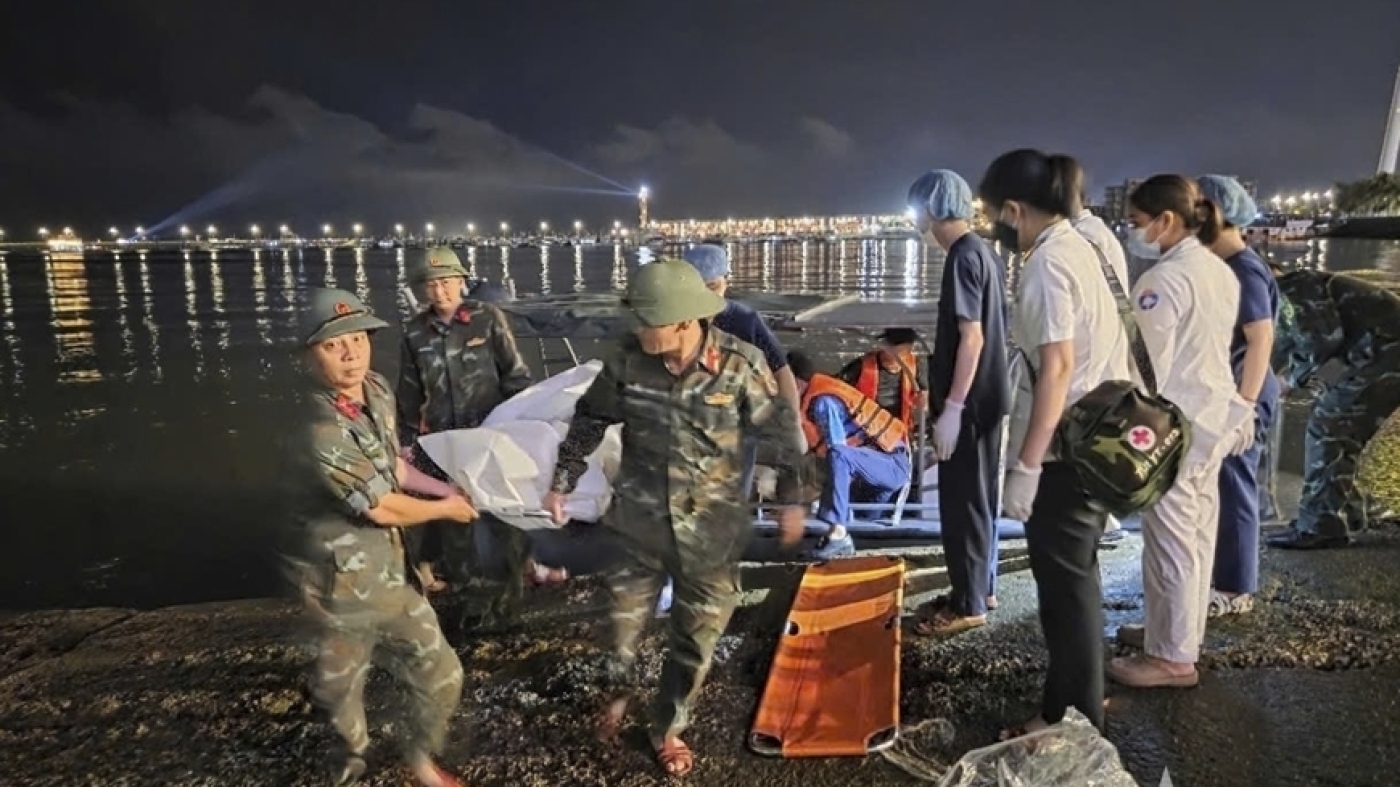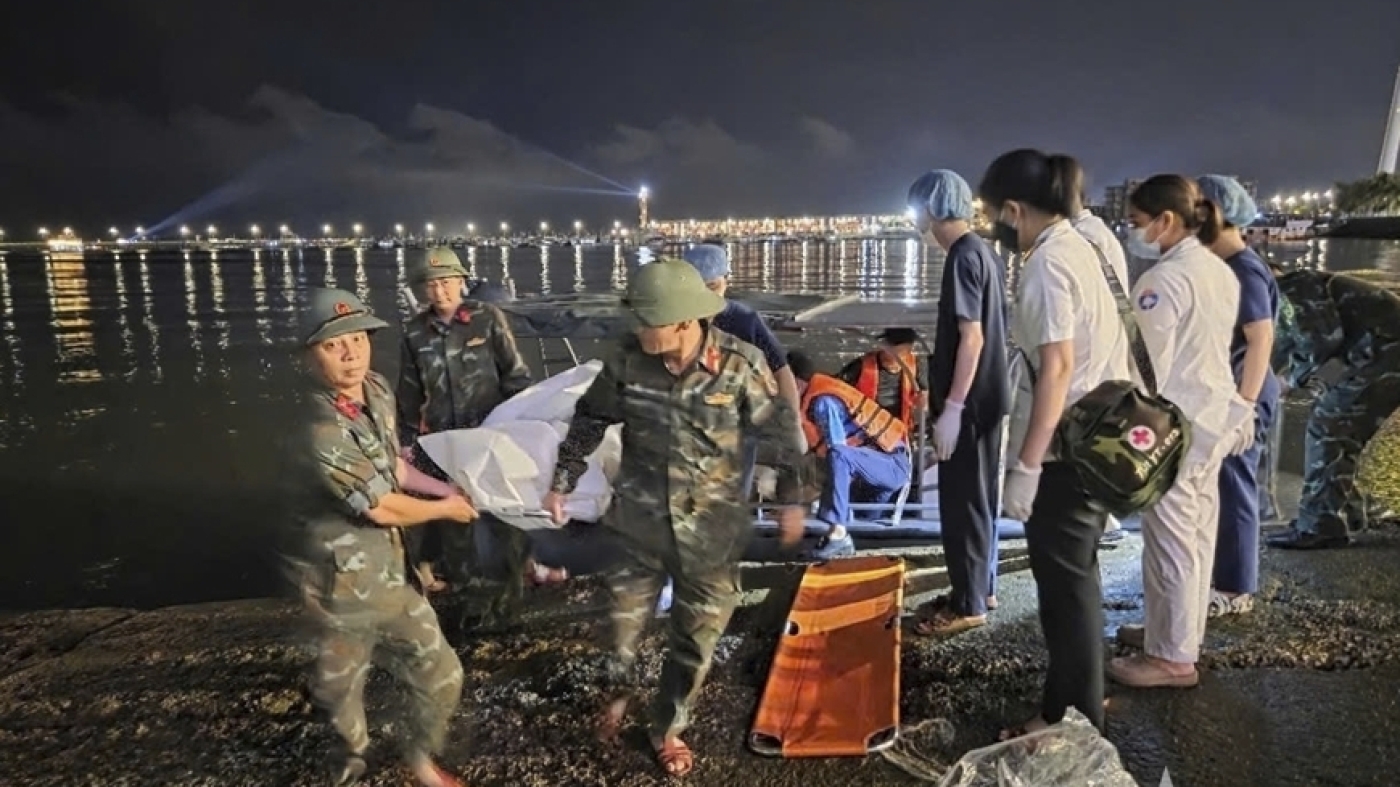The Ha Long Bay Tragedy: A Wake-Up Call for Maritime Safety
Introduction: A Beautiful Bay Turned Deadly
Ha Long Bay, a UNESCO World Heritage site, is renowned for its emerald waters, towering limestone karsts, and serene beauty. It attracts millions of tourists annually, offering a tranquil escape into nature’s embrace. However, on a fateful Saturday afternoon, this idyllic setting became the stage for a devastating tragedy. The capsizing of the *Wonder Seas* tourist boat during a sudden thunderstorm claimed 34 lives, leaving families shattered and raising critical questions about safety, preparedness, and emergency response in the region.
The Fateful Voyage: A Tourist Dream Turned Nightmare
The *Wonder Seas* set sail with 48 passengers and five crew members, all Vietnamese nationals, on what was meant to be a picturesque tour of Ha Long Bay. The bay’s stunning landscapes, with their mystical allure, have made it a must-visit destination for travelers seeking natural wonders. However, the tranquility of the bay was abruptly shattered by a violent thunderstorm. The storm unleashed strong winds and torrential rain, catching the boat off guard and causing it to capsize. Passengers and crew were thrown into the turbulent waters, turning a dream vacation into a nightmare.
The Rescue Effort: A Race Against Time
As news of the disaster spread, rescue teams sprang into action, launching a desperate search and rescue operation. Amidst the chaos and challenging weather conditions, they managed to save 11 people. One of the most remarkable rescues was that of a 14-year-old boy, who was trapped inside the overturned hull for four hours. His survival is a testament to human resilience and the bravery of the rescue teams. However, the recovery efforts also revealed the grim reality of the tragedy, with the bodies of 34 victims recovered from the water and surrounding areas.
Questions of Safety and Preparedness: A Systemic Failure?
The Ha Long Bay tragedy has sparked a wave of grief and concern, prompting investigations into the circumstances that led to the capsizing. Several critical questions are being raised:
Weather Forecasting and Warnings: A Failure in Communication?
Were adequate weather warnings issued in advance of the thunderstorm? If so, were these warnings effectively communicated to boat operators and tourists? The suddenness of the storm suggests a potential failure in forecasting or dissemination of information. Effective weather forecasting and timely communication of warnings are crucial for maritime safety, especially in regions prone to sudden and severe weather changes.
Boat Safety Standards: A Matter of Life and Death
Was the *Wonder Seas* properly equipped with safety gear, including life jackets and emergency communication devices? Were these devices readily accessible to passengers? Overcrowding and inadequate safety equipment have been contributing factors in similar maritime disasters worldwide. Ensuring that tourist boats are equipped with the necessary safety gear and that passengers are briefed on emergency procedures can significantly improve survival rates in such incidents.
Emergency Response Capabilities: A Test of Readiness
How quickly did rescue teams respond to the distress call? Were they adequately equipped and trained to handle such a large-scale maritime emergency? The success of rescue operations hinges on rapid response and effective coordination. Investing in advanced rescue equipment, training rescue teams, and conducting regular drills can enhance emergency response capabilities and save lives.
Regulatory Oversight: A Need for Stricter Enforcement
Were safety regulations in Ha Long Bay rigorously enforced? Were there sufficient inspections of tourist boats to ensure compliance with safety standards? Lax enforcement can create a dangerous environment for both tourists and local operators. Stricter regulations and regular inspections can help identify and rectify safety issues before they lead to disasters.
Ha Long Bay’s Vulnerabilities: A Beautiful but Unforgiving Landscape
Ha Long Bay’s unique geography, while stunning, also presents challenges to maritime safety. The narrow channels between the limestone karsts can create unpredictable wind patterns and strong currents. Sudden thunderstorms, common in the region, can quickly transform calm waters into treacherous seas. These factors underscore the need for stringent safety measures and constant vigilance.
Adding to the complexity, the area has previously experienced similar incidents. Last year, 30 vessels sank at boat lock areas in the coastal Quang Ninh province along Ha Long Bay after Typhoon Yagi brought strong wind and waves, further highlighting the region’s vulnerability to severe weather events. These incidents serve as stark reminders of the need for improved safety measures and preparedness.
The Human Cost: A Tragedy Beyond Numbers
Beyond the statistics and the investigations, the Ha Long Bay tragedy represents a profound human loss. Families have been torn apart, and dreams have been shattered. Each of the 34 victims was a person with their own story, their own hopes, and their own loved ones. Their absence leaves an unfillable void in the lives of those who knew them. The 11 survivors, while fortunate to be alive, will carry the emotional scars of this traumatic experience for years to come. The psychological impact of witnessing such a horrific event can be devastating, requiring long-term support and counseling.
A Call for Change: Learning from the Tragedy
The Ha Long Bay disaster must serve as a catalyst for change. A thorough review of safety protocols, weather forecasting capabilities, and emergency response procedures is urgently needed. Stricter regulations must be implemented and enforced to ensure that tourist boats are seaworthy and adequately equipped. Investment in improved weather monitoring technology and communication systems is essential to provide timely warnings of impending storms. Training for boat operators and crew members should be enhanced to equip them with the skills and knowledge to handle emergency situations.
The tourism industry in Vietnam, and particularly in Ha Long Bay, must prioritize safety above all else. A reputation for safety and reliability is crucial for attracting and retaining tourists. Cutting corners on safety to maximize profits is a short-sighted strategy that can have devastating consequences. The Ha Long Bay tragedy serves as a stark reminder of the importance of safety in the tourism industry.
Remembering and Moving Forward: A Commitment to Safety
The Ha Long Bay boat tragedy is a stark reminder of the power of nature and the importance of preparedness. As Vietnam mourns the loss of the 34 victims, it must also commit to learning from this tragedy and taking concrete steps to prevent similar incidents from happening in the future. The memory of those who perished should inspire a renewed dedication to safety and a commitment to protecting the lives of all who visit and work in this beautiful, but sometimes unforgiving, corner of the world.
In the aftermath of the tragedy, it is crucial to honor the victims by implementing meaningful changes that prioritize safety and preparedness. By doing so, we can ensure that Ha Long Bay remains a place of beauty and wonder, where tourists can enjoy its splendor without fear. The lessons learned from this tragedy must not be forgotten, but rather used as a foundation for a safer and more secure future for all who venture into the enchanting waters of Ha Long Bay.








